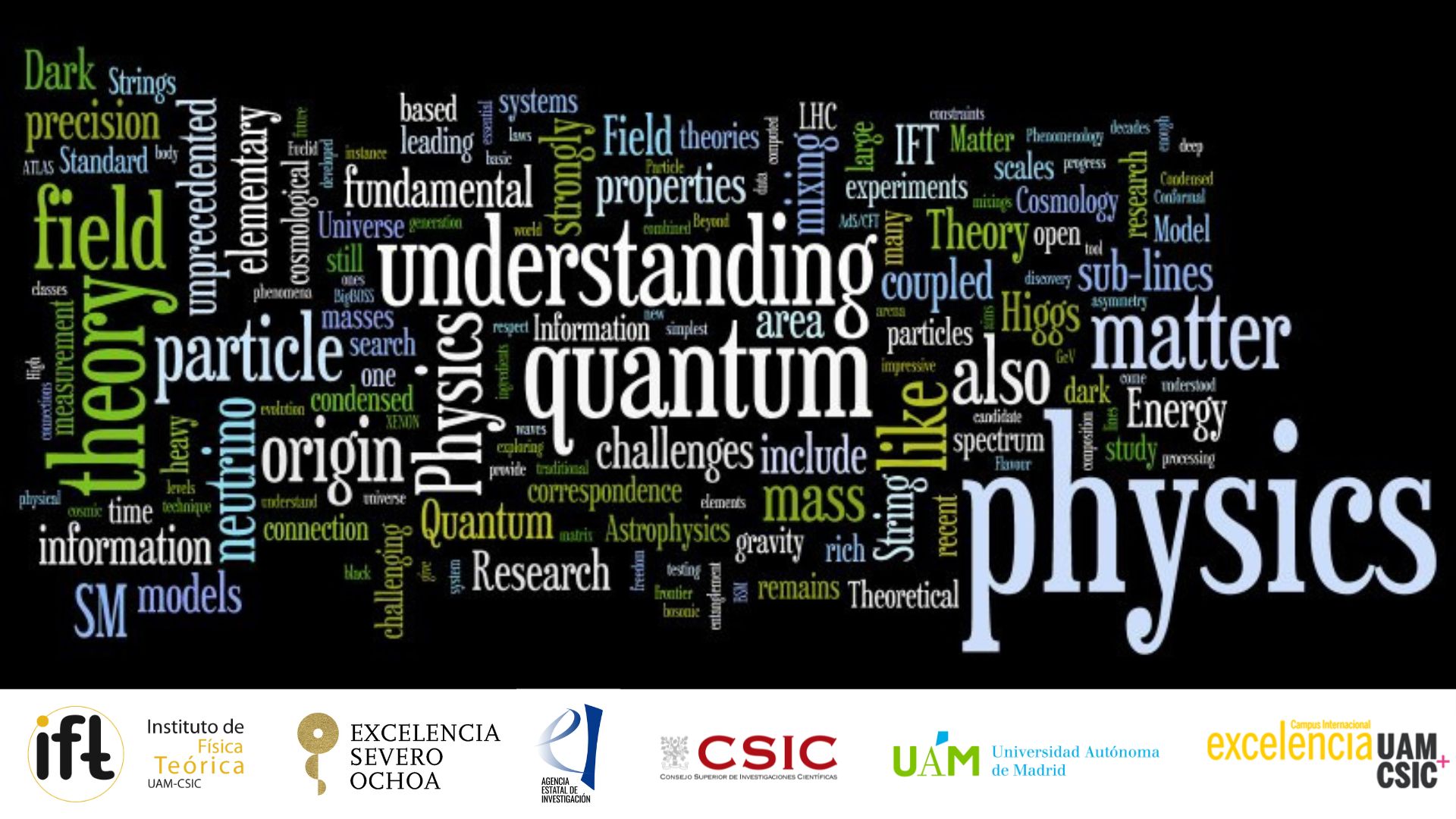Centro de Excelencia Severo Ochoa
Menú
Buscar

IFT Seminar Room/Red Room
Besides lattice QCD in particle physics, strongly coupled gauge theories arise, for example, in the condensed matter physics of spin liquids, or in the quantum information theory of Kitaev's toric code, which is a Z(2) lattice gauge theory. Numerical simulations of gauge theories on classical computers, in particular, at high fermion density or in out-of-equilibrium situations, suffer from severe sign problems that prevent the importance sampling underlying Monte Carlo calculations. Quantum simulators are accurately controllable quantum devices that mimic other quantum systems. They do not suffer from sign problems, because their hardware is intrinsically quantum mechanical. Recently, trapped ions, following a laser-driven stroboscopic discrete time evolution through a sequence of quantum gate operations, have been used as a digital quantum simulator for particle-anti-particle pair creation in the Schwinger model. Analog quantum simulators, on the other hand, follow the continuous time-evolution of a tunable model Hamiltonian. Using ultra-cold atoms in optical lattices, analog quantum simulators have been designed for Abelian and non-Abelian lattice gauge theories. Their experimental realization is a challenge for the foreseeable future, which holds the promise to access the real-time dynamics of string breaking, the out-of-equilibrium decay of a false vacuum, or the evolution of a chiral condensate after a quench, from
first principles. Quantum link models which realize gauge theories including QCD not with classical fields but with discrete quantum degrees of freedom, are ideally suited for implementation in quantum matter. For example, alkaline-earth atoms, whose nuclear spin represents an SU(N) degree of freedom, naturally embody fermionic rishon constituents of gluons.
Social media